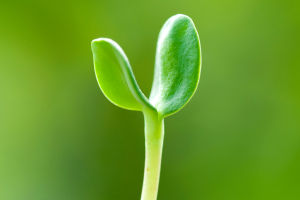Pine branches are whorled, with one or several segments growing each year. Winter buds are prominent with numerous bud scales.
Needle-like leaves are single, initially green, gradually turning brown as they mature. Pine trees are dioecious, bearing separate male and female cones.
Pinecones act like meticulously prepared towers, housing and nurturing seeds within the scales that act as rooms.
However, most pine seeds are not homebodies; equipped with wings of various sizes, when the cones mature and the scales open, they take flight to expand new territories. Pinecones are commonly palm-sized, but there are also oversized ones, such as the giant pinecones from the southwestern United States, reaching lengths of up to 35 centimeters and weighing over 4 kilograms.
In the process of pine seed processing, due to the lack of reasonable utilization plans, there has been a significant waste of pinecone resources. In recent years, the issue of utilizing pinecone resources has gradually gained attention, and the medicinal development value of its natural products has been widely recognized.
Various compounds can be extracted from pinecones, mainly polysaccharides, polyphenols, terpenes, flavonoids, and other compounds. Among them, polysaccharides are the most extensively studied due to their multiple bioactive properties.
1. Polysaccharides
Researchers have found that pinecone polysaccharides possess various biological activities such as anti-tumor, antibacterial, and antiviral effects. The water extraction and alcohol precipitation method is one of the main methods for extracting pinecone polysaccharides, sometimes combined with ultrasound-assisted extraction. Recently, membrane separation methods have emerged as a new technique for extracting polysaccharides.
Researchers have optimized the extraction process based on the traditional water extraction and alcohol precipitation method and found that a liquid-to-solid ratio of 1:12, extraction temperature of 100°C, and extraction time of 4 hours resulted in a high crude polysaccharide yield of up to 15.2 mg/g. To obtain purified polysaccharides, crude polysaccharides need to undergo deproteinization and decolorization.
Methods such as TCA, enzymatic treatment, and adsorption with large-pore resins, hydrogen peroxide, or activated carbon are commonly used for deproteinization and decolorization. Researchers compared the efficiency of ultrasound-assisted extraction with the traditional water extraction and alcohol precipitation method and found that the latter was slightly inferior in all aspects.
2. Other Compounds
Plant polyphenols, as secondary metabolites, are widely distributed in nature and possess certain antioxidant capabilities. In recent years, it has been discovered that pine trees contain a large amount of polyphenolic compounds.
Researchers have extracted polyphenols from larch pinecones and determined the polyphenol content in cones from different altitudes using the Folin-Ciocalteu method. The results showed that higher altitudes favored an increase in the total polyphenol content of pinecones.
Using ultrasound-assisted extraction, researchers extracted polyphenolic compounds from Masson pinecones and analyzed and optimized the optimal process conditions, which were: ethanol concentration of 65%, ultrasound time of 30 minutes, ultrasound power of 40W, pH 7, resulting in a polyphenol extraction rate of 12.68 mg/g.
In the research and utilization of pinecone resources, polysaccharides and polyphenols demonstrate broad application prospects. By continuously optimizing extraction processes, we can more efficiently obtain these beneficial compounds, providing more possibilities for drug development and functional foods.
Meanwhile, comprehensive utilization of pinecone resources should also receive more attention to reduce resource waste and promote sustainable development.
With continuous technological advancements and deeper research, it is believed that the potential of pinecone resources will be better explored and developed.


